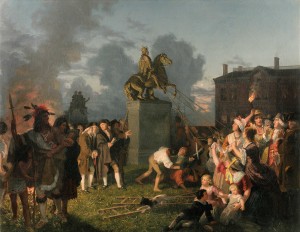 Appel à publication : Sculpture Journal, Special Issue: Sculpture, Iconoclasm and Facing History (2022)
Appel à publication : Sculpture Journal, Special Issue: Sculpture, Iconoclasm and Facing History (2022)
Call for Papers:
Sculpture, Iconoclasm and Facing History: A Special Issue of Sculpture Journal (Liverpool University Press)
On 7 June 2020, a statue of slave trader Edward Colston was pushed into the Avon River in Bristol, England in a highly publicized instance of iconoclasm that took place amongst a backdrop of worldwide protests against racial injustice. The Colston statue has brought the issue of sculpture and iconoclasm to the forefront of political and cultural conversation in the UK and beyond, amplifying the rallying cries of the ‘Rhodes Must Fall’ movement and numerous protests for the removal of statues of Confederate military leaders across the United States, among other problematic monuments across the world.
While this act of iconoclasm was celebrated as a visual reckoning with the historical roots of racism in Britain, opponents of the statue’s removal claimed that such destruction in effect served to erase history. The deliberate destruction of monuments of historical figures, however, has been a political tool for centuries. Indeed, the ethical questions pertaining to the preservation of cultural heritage have only come into art historical discourse within the last two hundred years. Public sculpture has been a particularly fraught part of this debate, given its seeming sense of permanence and monumental scale.
The events of 2020 have given new relevance to the long-entwined history of sculpture and iconoclasm. If statues offer a kind of ‘immortality’ for historical figures of the past, how can that past be reconciled with concerns of the present? How does the figural ‘presence’ inherent in such monumental sculpture operate in diverse societies? And how can the erasure of sculpture become part of the narrative of history, rather than its foil?
This special issue of Sculpture Journal seeks to address these questions through a variety of texts, including but not limited to: article-length (6,000 – 9,000 words) research on sculpture and iconoclasm, editorials, interviews, short essays, conservation studies and previously unpublished document sources. It seeks to examine the pressing issues of this debate from a worldwide perspective, and it is especially interested in texts that address decolonization, race and minority groups.
Please submit your proposal of c.500 words to elisa.foster@york.ac.uk by 1 February 2021. Full texts will be due 15 June with publication in the first issue of 2022.

Leave a Reply
You must be logged in to post a comment.